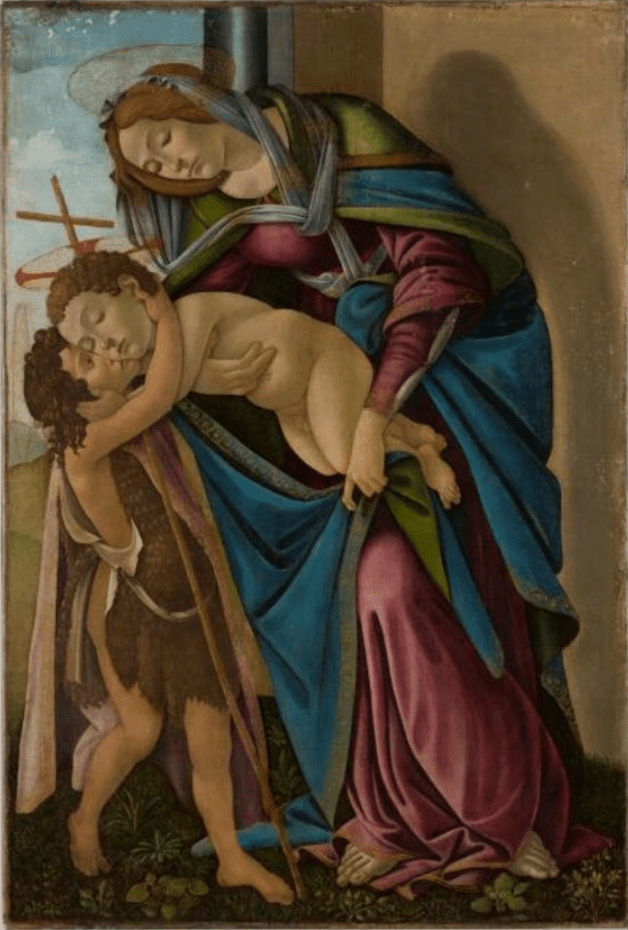A previously unknown Sandro Botticelli painting was discovered using scientific analysis at Saint Félix church in the French town of Champigny-en-Beauce, Artnet News reports. The work was long thought to be a 19th-century copy of a Botticelli masterpiece.
The painting shows the Virgin Mary with baby Jesus and a young John the Baptist, and was thought to be based on Virgin Mary, Infant Christ, and St. John the Baptist (ca. 1490), a painting whose attribution to Botticelli and his studio is accepted by art historians.
In 2010, art historian and curator Matteo Gianeselli recognized similarities between the newly attributed Virgin Mary painting and another work from the Renaissance artist’s studio. At the time, Gianeselli was researching Italian art in French public collections. He conferred with others in the field and, in 2021, mounted an exhibition at the Musée Jacquemart-André that compared the two pieces.
During a restoration in 2023, French researchers used micro-sampling and X-ray analysis, allowing them to date the piece to ca. 1510. Experts determined that several artists in Botticelli’s studio participated in the creation of the piece, with the master likely adding key details such as the Virgin Mary’s face—a move that was not unusual for the time. But it’s hard to definitively know the ways Botticelli contributed to the work, as he died in May 1510.
Extensive tests run by scientists at Centre de Recherche et de Restauration des Musées de France (C2RMF) then compared the two works to a studio version of the original from the Barber Institute of Fine Arts in Birmingham. The three were a match: they were all made using egg tempera and oil paint, along with two coats of gesso used as a base. Additionally, two canvas panels were bound together in the French painting, as they were in the first version housed in Florence, and there were similarities in the physical compositions of the paint used to produce them.
X-rays showed that the studio version was made using a technique known as pouncing, where holes trace the outline of another image and carbon powder is applied to transfer it to another canvas.
The study confirmed that the three figures in the Saint Félix painting were made with the same model as the Barber Institute version, which was based on an original Botticelli prototype.
For those wishing to see the original and the newly authenticated studio version from Saint Félix, the exhibition “Botticelli: Two Madonnas at Chambord,” co-curated by Gianeselli and Hélène Lebédel-Carbonnel, will be on display to the public in the chapel of the Château de Chambord in the Loire Valley beginning on October 19. A VR component, educational videos, and a talk will accompany the show.
“We are honored to receive these two pieces,” said Pierre Dubreuil, general director of the Domaine national de Chambord in a statement. Both are a reminder “that the Loire Valley was, and still is, the land of the Renaissance where the influence of Italian artists was fundamental.”

